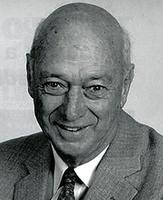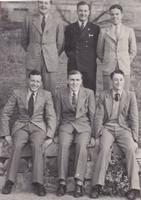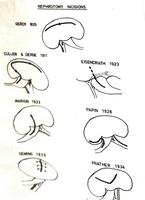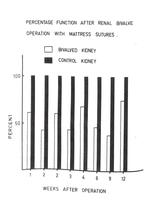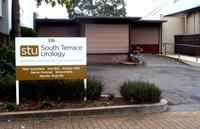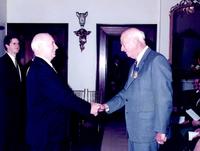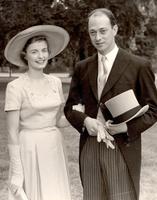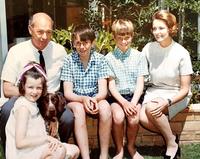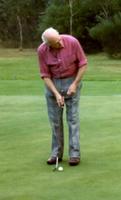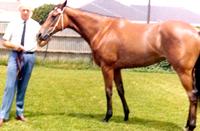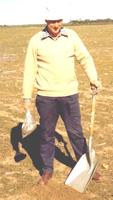
South Australian Medical Heritage Society Inc
Website for the Virtual Museum
Home
Coming meetings
Past meetings
About the Society
Main Galleries
Medicine
Surgery
Anaesthesia
X-rays
Hospitals,other
organisations
Individuals of
note
Small Galleries
Ethnic medicine
- Aboriginal
- Chinese
- Mediterran
John Pearce Maddern
AM MB BS FRCS FRACS MS.
SURGEON, GOLFER AND A SURGICAL MENTOR.
12/9/1925 — 8/3/2015
Acknowledgements: We are most grateful to Professor Guy Maddern and family who allowed us to access the obituaries and family photographs. David Brand from the Glenelg Golf Club provided the 16mm film showing John Maddern playing golf in 1938. Andrew Cook from the University of Adelaide Archives and Sandra Morrison from the RAH Heritage Office for the class photographs and other information. We thank professor Donald Simpson for historical information and help.
John Maddern's father Cecil Boase Maddern was a dentist and WW1 veteran. He met his wife Thea on a ship whilst returning to South Australia. John was born first, followed by brother Cecil, who went on to become a dentist. Their first residence was in Augusta Street, Glenelg, where he attended the Glenelg primary school. Supported by his mother Thea he developed a keen interest in golf. He joined the Glenelg Golf Club aged 11.
The family moved to Stirling and John Maddern attended St. Peter's College. It was a long commute, and he was fortune to have a friend, John Haigh, to travel with him.
The motto of his school house Mac Dermott was "Animus vincit omnia" – spirit conquers all – represents his lively and enterprising personality. His sporting interests continued, and he was a member of intervarsity golf and hockey teams.
He attended the medical school at the University of Adelaide and graduated MB BS in 1948 and was an intern at the Royal Adelaide Hospital the following year.
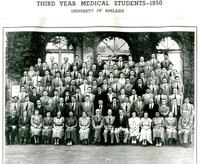
In his first year after graduation, John Maddern became a demonstrator in anatomy, indicating interest in surgery.
He started his surgical training in England. His first appointment was at St. Paul's Hospital, London, a centre of urology, and continued further training in urology in Hamilton, Ontario, Canada. He returned to Adelaide in 1956.
In the 5th and 6th decades of the last century, Adelaide's medical and surgical communities changed notably. The University of Adelaide founded Chairs in Medicine, Surgery, Obstetrics, Psychiatry and Paediatrics. The foundation appointees came mainly from Britain, bringing many innovations in teaching and research.
The hospitals realised the importance of surgical specialities, and units such as orthopaedic, thoracic, plastic surgery and urology were established.
John Maddern's first appointment was as an assistant surgeon to a urologist and general surgeon, Mr. Noel Bonnin. He and other specialists had no admitting rights, but could operate on referred patients.
When Mr. Bonnin transferred to a newly built The Queen Elizabeth Hospital in 1960, John Maddern became the head of urology at the RAH. He was also interested renal calculi, and obtained his MS (Master of Surgery) degree dealing with the management of staghorn calculi, for which he was awarded the British Association of Urological Surgeons prize in 1966.
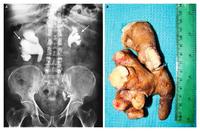
His thesis refers to the kidney incisions used to attempt the removal of staghorn calculi, ranging from as early as 1829 to 1934. The aim was to bi-valve the renal tissue, remove the stone intact, and stop any bleeding.
Working on dog kidneys, John Maddern studied the effects of such cuts on renal function.
It shows a marked decrease of almost 50% of renal function, which he felt was due to interference with the blood supply, usually due to large sutures used to control the bleeding. He advocated the approach through the renal pelvis, and removal of any branch of the staghorn above a stenosed calyx by partial nephrectomy. The current practice now involves laparoscopic approach, and dilatation of the stenosed calyx to remove part of calculus above it.
FURTHER SURGICAL CAREER AND APPOINTMENTS.
To see private patients, he and plastic surgeon Donald Robinson purchased a house at 326 South Terrace in Adelaide. This is now a private centre of urology.
He was involved with the Urological Society of Australia and New Zealand as President (1968-9), and was the Assistant Editor of the British Journal of Urology (1977-1985). He held the Chair of the Training, Accreditation and Education Committee in Urology (1980). The Surgical College co-opted him as a speciality councillor, and he examined in urology (1974-1978). He received his AM in 1996, and Australia sports medal in golf in 2000. He was in the vanguard of changes in urology, and a mentor to many young surgeons.
PHOTOGRAPHS KINDLY PROVIDED BY THE MADDERN FAMILY
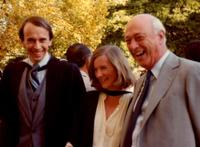
He was a keen and gifted golfer and played competition golf for Glenelg. He was a member of several golf clubs: Glenelg Golf Club (committee member), the Royal Adelaide Golf Club (Captain and President) and The St. Andrew's Golf Club, where he played whenever in England.
The Glenelg Golf Club published a "Vale John Maddern" article on their web-site. It includes a segment from a 16mm movie (above) showing John playing golf at the Glenelg Golf Club in 1938 when he was 13 years old.
John Maddern and his friend John Haigh purchased several race horses. He also owned a country property, and was a keen innovator.
John Maddern was involved in the early years of endo-urology and continued to encourage and attract future urologists. He continued acquire new equipment and techniques to keep his unit in best position to treat its patients. As usual, he retired as head of the unit in 1980 (aged 65), but continued as a senior visiting Urologist. In recognition of his services the Royal Adelaide Hospital altered his title to Emeritus.
